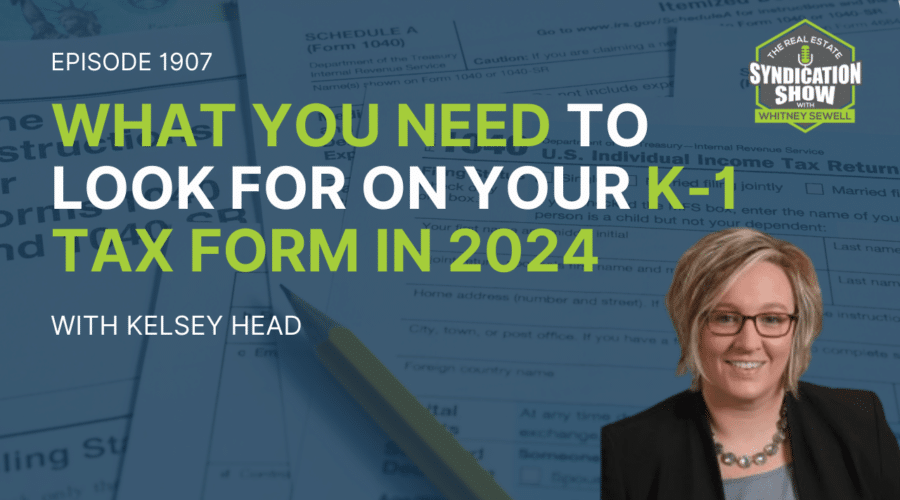Did you know that decades ago, investing in real estate used to be nearly impossible for smaller investors? Once the domain of only the rich and well-connected, recent Securities and Exchange Commission’s (SEC) rulings have removed the barriers for smaller investors and have made real estate syndication a popular way to invest.
Many have been able to take advantage of the most popular SEC rules investors use for raising capital – Rule 506(b) and 506(c). Choosing between Rule 506(b) or Rule 506(c) impacts your capital raising strategies in various ways.
This was the subject of my recent conversation with Dugan Kelley, managing partner at Kelley Clarke, PC, and head of the firm’s securities and real estate practice. I’d like to share salient points of our discussion supported by information from the US SEC website. I hope this helps you learn the key differences between Rules 506(b) and 506(c) before you start seeking investors for your next deal. I’d remind you, though, that this is not legal advice and you should consult with your attorney before conducting a 506(b) or 506(c) offering.
You may listen to the full podcast episode here.
What are Rules 506(b) and 506(c) for?
Both of these rules fall under Rule 506 of Regulation D of the Securities Act that protects investors from securities fraud. Rule 506 of Regulation D (Reg D) allows companies to sell securities without having to register with the SEC – which is a very complex and expensive process. Rules 506(b) and 506(c) are types of SEC registration exemptions that make it possible for companies to raise capital from investors without having to register a public offering. As with most investment transactions, raising funds in syndication is equivalent to issuing securities so, under this rule, syndications can raise money from investors to acquire properties. Under these rules, you, as an operator, can legally raise capital from investors with a 506(b) or a 506(c) offering to fund a deal acquisition.
“Raising capital is the most difficult thing to do in syndication. If you are a syndicator, getting over that fear factor in capital raising is crucial. Get into that place of being able to ask somebody for money because you can, legitimately. And the primary two exemptions that we’re applying for most syndicators are Reg D, under 506(c) or 506(b),” says Dugan.
Rule 506(b) and Rule 506(c): What’s the difference?
Rule 506(b)
This rule allows syndications to raise an unlimited amount of money from an unlimited number of accredited investors and up to 35 non-accredited sophisticated investors. This capital raising can be done without SEC pre-approval of the offering as long as it follows the rules for the exemption listed below.
- Syndications are not allowed to conduct general solicitations or advertise the offering in the market
- To prove they did not solicit investors, operators must be able to demonstrate a pre-existing, substantive relationship with an investor that must pre-date any offer to invest
- Syndications may raise capital from an unlimited number of accredited investors defined as an individual (or a couple) with a net worth of $1 million, excluding their primary residence, or an individual whose annual income exceeds $200,000 for the two most recent years (or $300,000 if with a spouse) and a reasonable expectation of the same for the current year.
- Syndications are limited to 35 non-accredited investors only. Non-accredited investors are required to be sophisticated investors, meaning they must possess knowledge and experience in financial and business matters so that they can evaluate the merits and risks of the prospective investment.
- When raising funds from non-accredited investors, the syndicator must also follow additional rules such as:
- Provide disclosure documents that have the same type of information as what is in a registered offering, as well as financial statement information
- The syndicator should be available to answer prospective purchasers’ questions
- Investors in 506(b) offering may self-certify that they are accredited or sophisticated through a pre-qualification form or a questionnaire provided by the syndicator
- The syndicator must file Form D electronically with the SEC within 15 days of the first equity being raised. This form provides the SEC with information on the business, the principal, the amount of money being raised, and some details about the offering. Once the offering is completed and all funds have been raised, the SEC doesn’t require any ongoing reporting.
Rule 506(c)
The Jumpstart Our Business Startups Act (Jobs Act) in 2012 gave rise to Rule 506 (c) to provide more opportunities for businesses and real estate investors to raise capital. Under Rule 506(c), syndicators can still raise an unlimited amount of money from an unlimited number of investors. In addition, as opposed to Rule 506(b), it permits syndicators to solicit and advertise an offering to the general public, subject to the conditions listed below.
- All investors must be accredited investors.
- The syndication should take reasonable steps to verify the prospective investors’ accredited investor status which could include reviewing documentation, such as W-2s, tax returns, bank and brokerage statements, credit reports, and the like.
- Similar to 506(b), Form D must be filed with the SEC within 15 days of the first equity being raised.
“Advertising and general solicitation is the major difference between Rule 506(b) and Rule 506(c). You cannot advertise or generally solicit a 506(b) offering while a 506(c), on the other hand, allows sponsors to advertise broadly to promote your offering,” explains Dugan. In addition, 506(c) offerings require syndicators to perform extra work verifying all investor’s accreditation status using federally prescribed “reasonable steps”. Be sure to keep detailed records of how you verified each potential investor in case you ever need to show the SEC.
“The vast majority of private syndication offerings in the country, however, are still under 506(b) which allows you to have unlimited accredited investors and up to 35 sophisticated investors that you have a pre-existing, substantive relationship with,” he adds.
How will I know if I have a substantive pre-existing relationship with my investors?
Advertising Offerings
“If you’re going to do a 506(c) offering, take advantage of the fact that it is a 506(c) opportunity. You’ll miss out if you don’t advertise,” advises Dugan. He adds: “Take advantage of all of the diversified channels of distribution to promote your 506(c) offering to potential audiences. Whether it is a podcast, your LinkedIn page, your personal Facebook page, creating a new Facebook group, paid Facebook ads, Instagram, or whether they are advertising a meet-up or a conference where they would be discussing a potential 506(c) offering. You are really only limited by your lack of creativity.”
However, Dugan cautions sponsors who are historically and primarily in the 506(b) space to exercise restraint and good judgment when releasing materials about a project on social media and other channels. “The law is there to help and guide us. We don’t want to be noncompliant or violate the statutes. But we also want to not be so fearful about announcing the blessings that we’ve had, the acquisitions that are coming, or a potential sale. We might want to just basically say, “We’re so glad that we sold one of our assets!” rather than “We closed. We’re excited! If you want to get on the next one, contact us,” explains Dugan, stressing that the last sentences run afoul of the compliance aspect. This is because a new 506(b) offering limits you to people that you already have a pre-existing relationship with, hence, the information should not be shared with new potential investors.
“The latter intends to draw investors to you while the former just shares some good news that your company is doing,” he adds.
Educating your investors vs. Preconditioning the market
“There’s a line between educating and giving generic information about your company versus what we call preconditioning the market,” says Dugan.
Preconditioning the market happens when a social media post or any material you release reveals the intent to attract new investors to you or elicit responses from potential investors unknown to you personally. “That’s a no-no. We don’t want to precondition the market but what we want to do is be able to honestly, transparently, and authentically share information about the great things that are going on with our company,” says Dugan.
Dugan clarifies that sharing general information to help people discover your company is acceptable and can be published. This may be sharing your overall vision or mission, your strengths, or things that your company does in general. “However, talking about specific returns (investors are expected to receive 12% cash on cash) or specific offering or specific property with the intent to drive more traffic or more potential investors to you, there is a line there that you don’t want to cross,” he cautions.
506(b) or 506(c): Which is better for me?
Your decision to choose between Rule 506(c) or 506(b) will depend mainly on whether you already have people in your network who would invest in your deal. If you plan to raise capital from your personal network who may or may not be accredited investors, then 506(b) may be your best option. Most first-time syndicators use 506(b) for their first deal, as they initially rely on people they already know. However, they may not be able to raise another round of funds from their personal network for their next deal so they would require advertising for the offering. If you’ll need to rely on soliciting other investors, 506(c) is your only option.
Under Rule 506(c), you’ll be able to pitch your offering to a wider network of investors beyond your personal one. Therefore, you’ll need to build your credibility, reputation, and track record to make you known to new investors. In addition to highlighting the benefits of your deal, your historical numbers should attract your potential investors.
Ultimately, when you make a decision between the two rules, be reminded that you need to keep detailed records of your relationship with the investors if you go with 506(b) and of the accredited investor verification process if you go with 506(c).
FINAL THOUGHTS
Rule 506(b) or 506(c) both provide excellent opportunities for real estate syndicators to raise capital and fund their deal acquisition without complicated government regulation. The rules may give registration exemption, but you should be diligent in following requirements. Hire or consult an experienced attorney to confidently navigate the process and succeed in your investing goals.
References:
Rule 506 of Regulation D (US Securities and Exchange Commission website
Eliminating the Prohibition on General Solicitation and General Advertising in Certain Offerings
General Solicitation US SEC website
–
Interested in multifamily investing? Life Bridge Capital is here to guide you. If you’re interested, we’ll be happy to talk to you. You can email [email protected] or click here and we’ll schedule a call.



